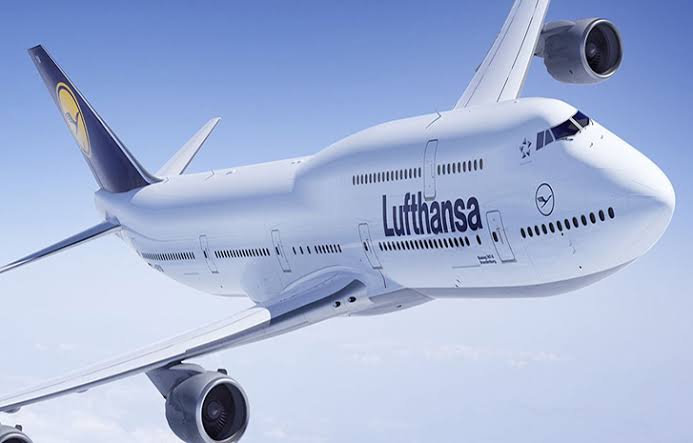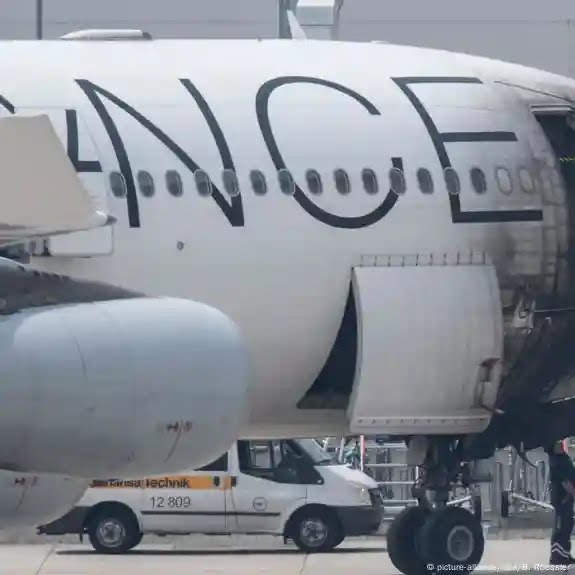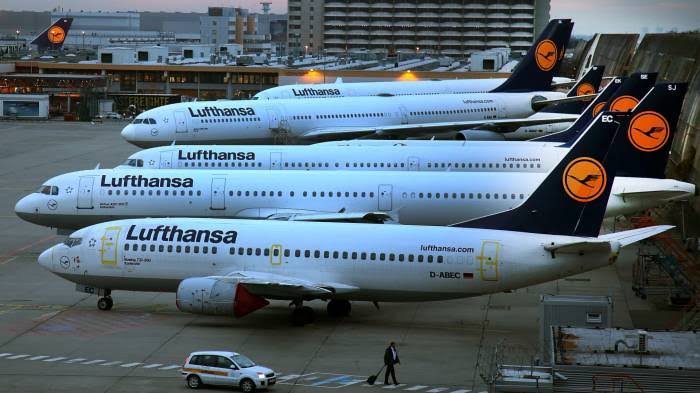Lufthansa Flight LH569 Makes Emergency Landing in Algiers After Cabin Fills with Smoke
Lufthansa Flight LH569 Makes Emergency Landing in Algiers After Cabin Fills with Smoke

A routine transcontinental flight turned into a tense emergency situation when Lufthansa Flight LH569 from Lagos, Nigeria, to Frankfurt, Germany, was forced to divert and make an emergency landing in Algiers, Algeria, due to smoke in the cabin. The incident occurred on May 10, 2018, and though no injuries were reported, it highlighted the ever-present importance of aviation safety, crew training, and emergency preparedness.
The flight, operated on an Airbus A330-300, was carrying approximately 200 passengers and 12 crew members on what was expected to be a standard overnight route connecting West Africa to Europe. Just over an hour into the flight, as the aircraft cruised at altitude, passengers and flight attendants began noticing an unusual burning odor followed by visible wisps of smoke emanating from the rear section of the cabin.
The Incident Unfolds Mid-Flight
Flight LH569 had departed from Murtala Muhammed International Airport in Lagos at 11:35 PM local time, heading northward over the Sahara Desert. Roughly 90 minutes into the flight, several passengers alerted cabin crew to the presence of smoke and an acrid smell, which many initially assumed could be electrical.
According to passenger accounts, the crew quickly began investigating while maintaining calm. One traveler, Amanda Friedrich, a German humanitarian aid worker, recalled the moment: “There was a strange burning smell, almost like plastic or wires. People were looking around, whispering. Then we saw a bit of haze above the rear galley. That’s when I knew something was wrong.”
The flight attendants promptly notified the cockpit, and the pilots, acting according to safety protocols, donned oxygen masks and began a checklist for smoke and fire procedures. Though no flames were visible, the presence of smoke alone is considered a critical emergency in aviation due to the risk of fire and toxicity in a sealed environment.
Decision to Divert to Algiers
Given the urgency of the situation and the risk posed by potential fire onboard, the flight crew made the decision to divert to the nearest major airport with adequate emergency services—Houari Boumediene Airport (ALG) in Algiers, Algeria. The aircraft initiated a rapid descent and was granted priority clearance by Algerian air traffic control.
Flight LH569 touched down safely in Algiers at approximately 2:15 AM local time, roughly three hours after takeoff. Emergency vehicles were positioned along the runway and met the aircraft as it taxied to a remote stand.
Upon arrival, the aircraft was met by airport fire and rescue personnel, who boarded the aircraft to assess the situation. Though the smoke had dissipated by the time the plane landed, the cabin was inspected thoroughly to ensure there was no remaining fire hazard.
Evacuation and Investigation
Passengers were not evacuated via emergency slides, as the crew determined that a standard disembarkation would suffice given the absence of fire. Travelers were asked to leave their personal belongings behind as a precaution, and deplaning took place within minutes of the aircraft’s arrival.
Once inside the terminal, passengers were provided water, snacks, and basic amenities while Lufthansa coordinated accommodations and onward travel plans. Algerian authorities also assisted in facilitating temporary visas for passengers who needed to spend the night in the country, as many did not carry the appropriate documentation for entry.
The cause of the smoke was initially unknown, but Lufthansa and local aviation maintenance teams conducted a full inspection of the aircraft. Preliminary findings suggested the smoke may have originated from an overheated electrical component in the galley area—possibly a malfunctioning coffee maker or an auxiliary power unit component.
No structural damage was found, and there was no evidence of fire or explosion. Nevertheless, as a precaution, the aircraft was grounded pending further inspection, and passengers were booked onto alternative flights or placed in hotels until a replacement aircraft could be dispatched from Frankfurt.
Passenger Experiences
Despite the alarming situation, passengers overwhelmingly praised the Lufthansa crew for their professionalism and calm demeanor during the emergency. “The crew kept us calm. They didn’t overreact, but they acted fast. You could tell they were trained for exactly this kind of thing,” said Adewale Oseni, a Lagos-based engineer traveling to Germany for a conference.
Other passengers expressed their anxiety over the mid-air diversion, especially given that many were asleep or resting when the event occurred. “It’s terrifying to smell smoke on a plane. Your mind immediately jumps to the worst,” said Fatima Koller, a student from Cologne. “But everything was handled really well.”
Lufthansa’s Response
Lufthansa responded promptly, issuing a statement to the press:
> “Flight LH569 from Lagos to Frankfurt diverted to Algiers as a precautionary measure due to reports of smoke in the cabin. The aircraft landed safely and without incident. All passengers and crew disembarked without injury. The safety and well-being of our passengers is always our highest priority. We are working closely with Algerian authorities to determine the source of the issue and to resume onward travel as soon as possible.”
The airline also activated its passenger care protocols, including deploying support staff and customer service representatives to assist stranded travelers, handle rebookings, and provide compensation where applicable.
Safety Protocols and Industry Standards
Smoke in the cabin is considered one of the most serious emergencies in aviation, second only to visible onboard fire. Aircraft are designed with built-in fire suppression systems, smoke detectors, and redundant safety mechanisms, but incidents still require immediate action.
Aviation experts emphasized that Lufthansa’s handling of the event adhered to international best practices. “Any time you see smoke, it’s treated as an imminent threat. The crew’s decision to divert was absolutely appropriate,” said Jean-Marc Deschamps, an aviation safety analyst and former pilot.
The incident also underscored the value of modern pilot training programs, which routinely simulate scenarios involving smoke and electrical failure to prepare crews for real-world incidents.
Aircraft Maintenance and Follow-Up
Following the incident, the Airbus A330-300 remained on the ground in Algiers for 24 hours while maintenance crews from Lufthansa Technik inspected and serviced the affected systems. Replacement parts were flown in from Europe, and after passing safety checks, the aircraft was flown back to Frankfurt for further evaluation.
The findings from the investigation were shared with international aviation safety bodies, including the European Union Aviation Safety Agency (EASA), as part of Lufthansa’s commitment to transparent reporting and continued safety improvement.
Resumption of Services
Lufthansa resumed normal operations on the Lagos–Frankfurt route within 48 hours, using a different aircraft. All passengers affected by the emergency landing were offered compensation under EU passenger rights regulations, including hotel stays, meal vouchers, and rebooking on subsequent flights.
Passengers who experienced extended delays or missed connections were offered additional travel credits or upgrades on future Lufthansa flights.
Conclusion
The emergency landing of Lufthansa Flight LH569 in Algiers stands as a powerful reminder of the challenges and unpredictability of air travel. Though ultimately a precautionary event, the presence of smoke in the cabin is among the most serious incidents that can occur mid-flight. Thanks to the swift, composed actions of the flight crew and effective coordination with Algerian authorities, the situation was handled safely and efficiently.
Passengers continued their journeys with a newfound respect for the complex systems and people that make air travel one of the safest modes of transportation. For many, the experience, though frightening, ended not in tragedy, but in a renewed appreciation for safety, training, and calm under pressure.






